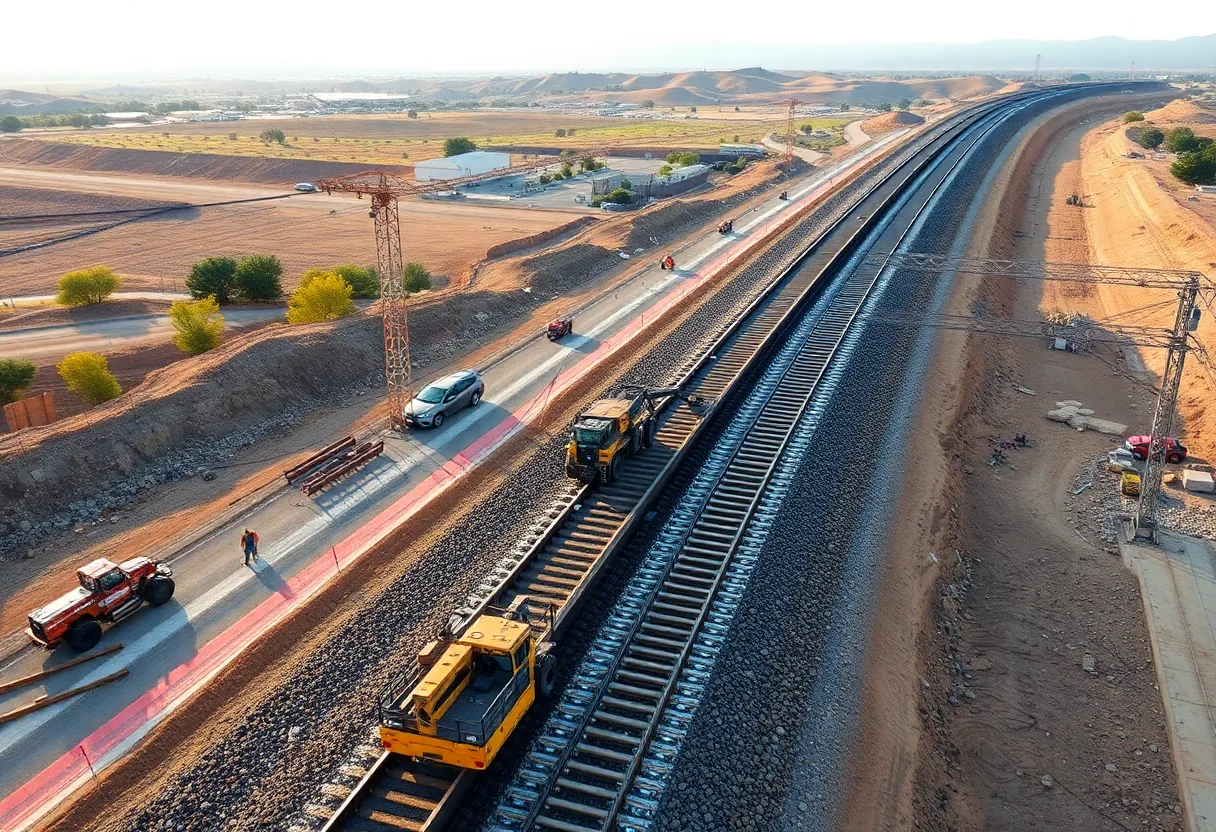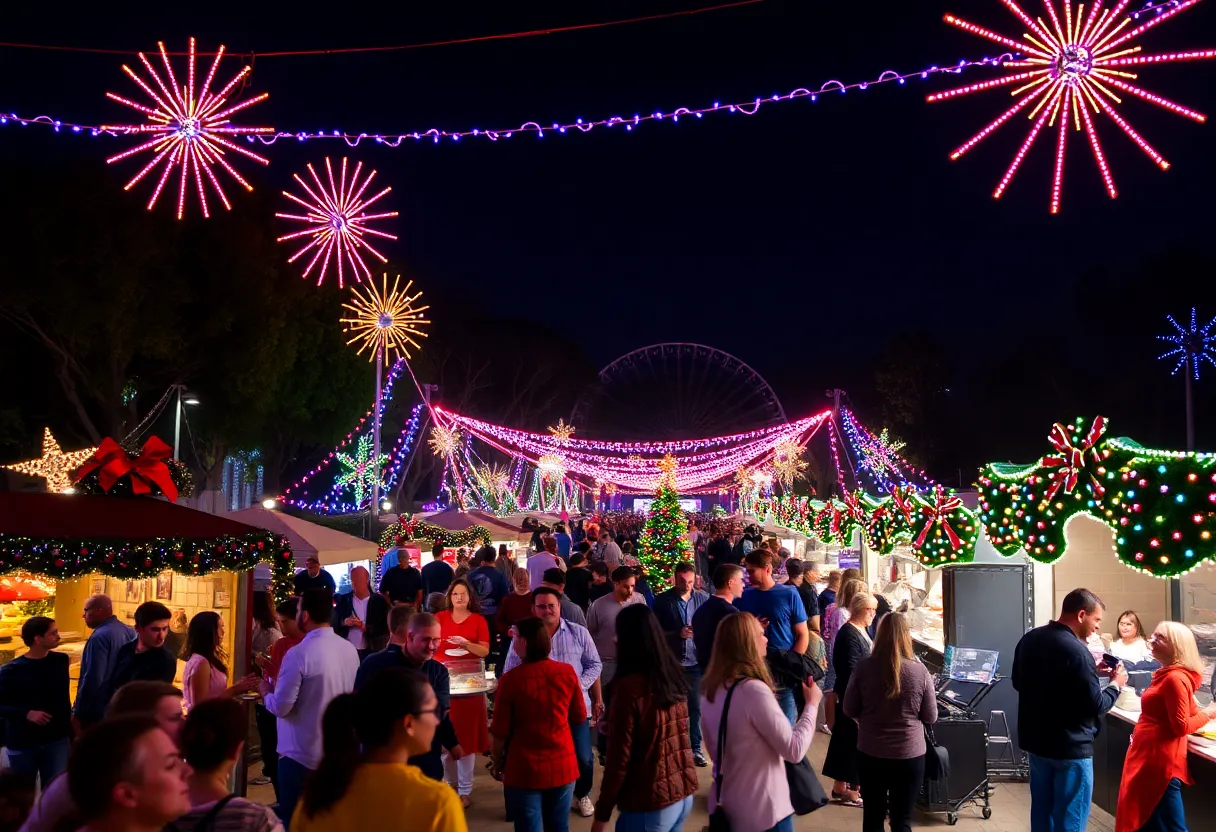News Summary
California Governor Gavin Newsom has signed Assembly Bill 377, requiring the California High-Speed Rail Authority to create a funding plan for the Central Valley segment. The plan, due in 2026, aims to address financial challenges and avoid cost overruns as the project faces delays and potential federal funding issues. With construction impacting local traffic, the initiative aims to boost infrastructure and connect key regions by 2030 while addressing rising project costs currently estimated between $89 billion and $128 billion.
California Governor Gavin Newsom signed Assembly Bill 377 on Wednesday, mandating the California High-Speed Rail Authority to develop a comprehensive funding plan for the Central Valley segment of the high-speed rail project. This plan must include updated cost estimates, risk assessments, and options for initiating service between Merced and Bakersfield. It is intended to be included in the authority’s business plan, which is due in 2026.
Governor Newsom asserted that the high-speed rail initiative is a crucial investment that will significantly benefit California’s future infrastructure and transport capacities. He emphasizes that creating a clear financial strategy is essential to avoid wasting taxpayer dollars on the controversial project.
The bill was authored by Central Valley Assemblymember David Tangipa, who stressed the importance of the funding plan in ensuring fiscal responsibility and transparency in the high-speed rail project. Currently, the California High-Speed Rail Authority is involved in litigation against the Trump Administration, seeking $4 billion in federal funding, highlighting ongoing financial challenges for the project.
The High-Speed Rail Authority projects that train operations will commence by 2030, despite previous delays that have postponed the timeline by a decade. However, the estimated cost to complete the project has substantially increased from an initial budget of $33 billion to an estimated range of $89 billion to $128 billion. To address part of this budgetary concern, Governor Newsom’s proposed budget allocates $1 billion annually for the next 20 years specifically for the completion of the initial operating segment of the rail line.
In recent developments related to the project, road closures have been reported near the Fresno Chaffee Zoo due to utility work connected to the high-speed rail construction. These closures on Olive Avenue are part of Construction Package 1, which encompasses the first 32-mile section between Madera County and Fresno County. Planned road closures from West Avenue to Carruth Avenue will take place daily from 9 a.m. to 4 p.m. until August 8. Additional closures affecting routes from Golden State Boulevard to West Avenue are scheduled to last until September 22, taking effect from 9 p.m. to 6 p.m.
The high-speed rail project has faced a series of challenges, particularly after the Trump Administration indicated intentions to withdraw $4 billion in federal grants. A recent federal report raised concerns about the High-Speed Rail Authority’s capability to complete the project, citing issues such as extensive change orders, missed deadlines, and inadequate strategies to fill anticipated funding gaps. Overall, the projected funding shortfall for the rail project has risen to $14 billion due to the associated risks of federal funding withdrawal.
To date, over 70% of the approximately $13 billion spent on the high-speed rail initiative has been sourced from state funds, with around $6.9 billion coming from federal contributions since 2009. The funding dynamics of the project are further complicated by political disputes and competing priorities regarding cap-and-trade revenues, which are critical for climate change programs including high-speed rail.
Governor Newsom’s proposal involves a vision for a shift towards a cap-and-invest system that aims to extend funding opportunities for essential climate initiatives, incorporating the high-speed rail project as a key element of California’s broader sustainability efforts. This ongoing discourse reflects deep-seated complexities that continue to challenge the advancement of California’s ambitious high-speed rail network.
Deeper Dive: News & Info About This Topic
- ABC30: Newsom signs bill for high-speed rail funding plan
- Fresno Bee: High-speed rail project updates
- San Francisco Chronicle: High-speed rail financing concerns
- Encyclopedia Britannica: High-speed rail
- Google Search: California high-speed rail

Author: STAFF HERE SAN DIEGO WRITER
The SAN DIEGO STAFF WRITER represents the experienced team at HERESanDiego.com, your go-to source for actionable local news and information in San Diego, San Diego County, and beyond. Specializing in "news you can use," we cover essential topics like product reviews for personal and business needs, local business directories, politics, real estate trends, neighborhood insights, and state news affecting the area—with deep expertise drawn from years of dedicated reporting and strong community input, including local press releases and business updates. We deliver top reporting on high-value events such as Comic-Con International, San Diego County Fair, and San Diego Pride Festival. Our coverage extends to key organizations like the San Diego Regional Chamber of Commerce and United Way of San Diego County, plus leading businesses in biotechnology, healthcare, and technology that power the local economy such as Qualcomm, Illumina, and Scripps Health. As part of the broader HERE network, including HEREAnaheim.com, HEREBeverlyHills.com, HERECostaMesa.com, HERECoronado.com, HEREHollywood.com, HEREHuntingtonBeach.com, HERELongBeach.com, HERELosAngeles.com, HEREMissionViejo.com, and HERESantaAna.com, we provide comprehensive, credible insights into California's dynamic landscape.





